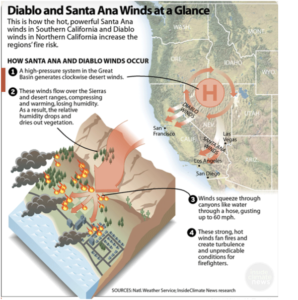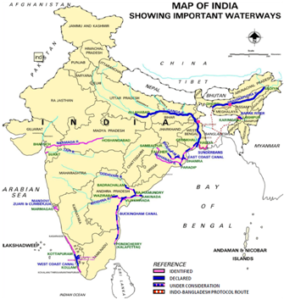IASbaba's Daily Current Affairs Analysis
Archives
(PRELIMS & MAINS Focus)
Syllabus:
- Prelims & Mains – ART & CULTURE
Context: The Supreme Court in an interim order said that musician T M Krishna should not be recognised as a recipient of the Sangita Kalanidhi M S Subbulakshmi award and also restrained him from projecting himself as a recipient of the honour till it decides an appeal challenging the grant of the same to him.
Background: –
- The top court’s order came a day after Mr. Krishna was conferred the award instituted by The Hindu and awarded by the Music Academy at the inauguration of its 98th annual Conference and Concerts in Chennai.
About Carnatic music
- Carnatic music is a classical music tradition from Southern India, deeply rooted in the cultural and religious practices of the region.
Origins and History:
- Ancient Roots: Carnatic music has ancient origins, with influences from the Sama Veda, one of the four Vedas containing hymns set to music.
- Temple Traditions: Temples played a significant role in the development and preservation of Carnatic music, with musical performances being integral to temple rituals.
- Bhakti Movement: The Bhakti movement, which gained prominence between the 6th and 17th centuries, contributed to the development of devotional music.
- Medieval Composers: Composers like Purandaradasa (1480-1564) systematized Carnatic music methods and authored numerous compositions.
- The Trinity: The 18th century saw the emergence of the Trinity of Carnatic music—Thyagaraja, Shama Shastri, and Muthuswami Dikshitar—who compiled compositions that define the Carnatic music repertoire.
Key Concepts:
- Raga (Rāga): A melodic framework for improvisation and composition.
- Tala (Tāḷa): The rhythmic aspect of music, marked by mathematical precision.
- Bhava (Bhāva): The expression of emotions and thoughts through music.
Instruments:
- Vocal: The human voice is the primary instrument in Carnatic music.
- Melody Instruments: Violin, Veena, Nadaswaram, and Flute are commonly used.
- Percussion Instruments: Mridangam, Ghatam, Kanjira, and Thavil are essential for rhythm.
Performance Structure:
- Kriti (Kṛti): A structured composition that includes a pallavi (refrain), anupallavi (second verse), and charanam (final verse).
- Ragam Tanam Pallavi (Rāgam Tāṇam Pāḷavi): A complex and highly improvisational section showcasing the performer’s skill.
- Thillana (Tillāṇa): A rhythmic piece that concludes the performance.
Notable Composers:
- Purandaradasa: Known as the father of Carnatic music.
- The Trinity: Thyagaraja, Shama Shastri, and Muthuswami Dikshitar
Source: The Hindu
Syllabus:
- Prelims – ENVIRONMENT
Context: Scientists conducted a 10-year study on orcas in the North Atlantic Ocean. Despite these orcas living far from human settlements, researchers found high levels of persistent organic pollutants (POPs) in their blubber (the fat layer under their skin).
Background: –
- One of the POPs found were polychlorinated biphenyls (PCBs). Used as coolants and lubricants in electrical components, they were banned in the US and Canada 50 years ago. The blubber samples also contained several other categories of POPs, whose “production, use, and/or release” were to be reduced or eliminated under Stockholm Convention on Persistent Organic Pollutants, signed in 2001.
Key takeaways
- Persistent Organic Pollutants (POPs) are a group of toxic chemicals that are resistant to environmental degradation through chemical, biological, and photolytic processes.
Characteristics:
- Persistence: POPs remain in the environment for extended periods without breaking down.
- Bioaccumulation: These pollutants accumulate in the fatty tissues of living organisms.
- Lipophilicity: POPs are highly soluble in fats and oils, leading to their accumulation in the food chain.
- Toxicity: They are toxic to both humans and wildlife, causing adverse health effects.
- Long-range Transport: Can be carried by wind and water to regions far from their source.
Sources:
- Pesticides: Many POPs are pesticides or insecticides, such as DDT and aldrin.
- Industrial Chemicals: Some POPs are industrial chemicals like polychlorinated biphenyls (PCBs).
- Unintentional By-products: POPs can also be unintentional by-products of waste burning and industrial processes, such as dioxins and furans.
International Regulation:
- Stockholm Convention: The Stockholm Convention on Persistent Organic Pollutants is a global treaty aimed at eliminating or restricting the production and use of POPs. It was adopted in 2001 and became effective in 2004.
- India is a signatory and has ratified the convention.
- Control Measures: The convention includes measures to prohibit or restrict the production, use, and release of POPs, as well as to ensure their safe disposal.
- Examples of POPs:
- The Dirty Dozen: The initial list of POPs identified by the Stockholm Convention includes aldrin, chlordane, dieldrin, endrin, heptachlor, hexachlorobenzene, mirex, toxaphene, PCBs, DDT, dioxins, and furans.
- New Additions: Over time, additional POPs have been added to the list, such as perfluorooctane sulfonic acid (PFOS).
Source: Down To Earth
Syllabus:
- Prelims – GEOGRAPHY
Context: Two Russian oil tankers have been badly damaged in the Black Sea, causing an oil spill. The incident took place in the Kerch Strait, which separates Russia from Crimea – the Ukrainian peninsula illegally annexed by Moscow in 2014.
Background:
- The Kerch Strait is a key route for exports of Russian grain and it is also used for exports of crude oil, fuel oil and liquefied natural gas.

Key takeaways:
- The Kerch Strait is a narrow waterway in Eastern Europe that connects the Black Sea with the Sea of Azov.
- Location: The strait separates the Kerch Peninsula of Crimea (part of the Russian-occupied Crimean Peninsula) to the west from the Taman Peninsula of Russia’s Krasnodar Krai to the east.
- Dimensions: The strait is approximately 35 kilometers long and varies in width from 3.1 kilometers to 15 kilometers. The average depth of the strait is around 18 meters.
Historical Significance:
- Ancient Names: In ancient times, the strait was known as the Cimmerian Bosporus or Cimmerian Strait, named after the Cimmerians, a group of steppe nomads.
- Roman Era: The Romans referred to it as the Strait of Cimmerian Bosphorus.
- World War II: The strait was a significant site during World War II, witnessing naval battles and strategic operations.
Modern Developments:
- Crimean Bridge: The Crimean Bridge, also known as the Kerch Strait Bridge, was completed in 2018. It is the longest bridge in Europe, spanning 19 kilometers (12 miles) and includes both road and rail connections.
- Conflict: The strait has been a point of conflict, especially after Russia’s annexation of Crimea in 2014. The Kerch Strait incident in 2018 saw a naval confrontation between Russia and Ukraine.
Source: BBC
Syllabus:
- Prelims – GEOGRAPHY
Context: Fire crews continue to battle a wildfire in the wealthy coastal town of Malibu, California. Although the cause of the fire is yet to be determined, experts suggest that the fire has been destructive because of two reasons, the “Santa Ana” winds and climate change.
Background: –
- The wildfire has charred more than 4,000 acres and affected about 22,000 people.

Key takeaways
- Santa Ana winds blow when high pressure builds over the Great Basin — the area between the Rocky Mountains and Sierra Nevada (a mountain range in the Western United States) — and the pressure is low over California’s coast.
- The difference in pressure triggers the movement of powerful winds from the Basin’s inland deserts, east and north of Southern California, over the mountains toward the Pacific Ocean.
- As the wind comes down the mountains, it compresses and heats up. The wind’s humidity also drops, sometimes to less than 20% or even less than 10%. The extremely low moisture turns vegetation dry, making it ready to burn. This process helped fuel the flames in Malibu.
- Santa Ana winds usually occur from October to January.
Source: BBC
Syllabus:
- Mains – GS 3
Context: The government unveiled a major policy for cargo promotion, ‘Jalvahak’, to boost long-haul cargo movement via inland waterways across National Waterways (NW) on rivers Ganga, Brahmaputra, and Barak.
Background: –
- India has about 14500 kilometres of navigable waterways. Despite this, Inland waterways remain underutilized at a share of 2% in India’s modal mix, compared to 35% in Bangladesh.

Inland Waterways:
- They are navigable water bodies located within the boundaries of a country, typically away from coastal areas.
- The National Waterways Act of 2016, has identified 111 navigable water courses and declared them “national inland waterways”.
Significance/advantages of Inland Waterways in India:
- It reduces transport costs as it is reported to be 60% cheaper than road transport and 20-30% cheaper than rail.
- According to the findings of the Integrated National Waterways Transportation Grid Study, one litre of fuel will move 24 tons through 1km on the road, 85km on the rail, and 105 km on inland water transport. So inland waterways are a fuel and energy-efficient medium of transportation as compared to the other modes of transport like rail and road.
- It is an environment-friendly mode of transport as it emits 10 times less carbon dioxide per ton-kilometer compared to road transport, contributing to lower greenhouse gas emissions.
- It does not require extensive land acquisition like that of road and rail projects.
- It helps in employment generation as the development of inland waterways creates jobs in various sectors such as river conservancy, vessel operation, terminal management, and tourism.
- It helps in creating seamless interconnectivity connecting hinterlands along navigable river coasts and coastal routes.
- It is likely to play a crucial role in connecting the northeastern states to the mainland.
- It enhances tourism development through initiatives like river cruises which help to promote cultural and heritage tourism along riverbanks.
Issues/Challenges related to Inland Waterways in India:
- Indian rivers do not have adequate depth and northern rivers suffer from high siltation which extensive dredging a necessity.
- The operational efficiency is affected due to the shortage of modern terminals and maintenance, repair, and overhaul (MRO) facilities for vessels.
- There have been concerns regarding environmental pollution caused due to dredging activities necessary for maintaining navigability.
- The safe navigation at night is hampered due to the lack of Night Navigation Facilities such as Differential Global Positioning Systems (DGPS).
- The passage of bigger vessels may get obstructed due to low vertical clearances from bridges.
- It is often burdened by regulatory complexities and overlapping jurisdictions among various government agencies.
- Both public and private funding in the sector is low but dredging as well as infrastructure for IWT requires huge investments.
Source: Business Standard
Practice MCQs
Q1.) Which of the following statements about Persistent Organic Pollutants (POPs) is/are correct?
- POPs can bioaccumulate in the fatty tissues of organisms and magnify through the food chain.
- India is not a signatory to the Stockholm Convention on Persistent Organic Pollutants.
- POPs are completely biodegradable in the environment.
Options:
a) 1 only
b) 2 and 3 only
c) 1 and 3 only
d) 1, 2, and 3
Q2.) Consider the following statements regarding the Kerch Strait:
- It connects the Black Sea with the Sea of Azov.
- The Crimean Bridge, which spans the Kerch Strait, is the longest bridge in Europe.
- The Kerch Strait separates Crimea from Ukraine’s mainland.
Options:
a) 1 and 2 only
b) 2 and 3 only
c) 1 and 3 only
d) 1, 2, and 3
Q3.) Which of the following statements about Santa Ana winds is/are correct?
- They are dry, warm winds originating from high-pressure areas in the Great Basin.
- These winds primarily occur during the summer months in Southern California.
- Santa Ana winds contribute to an increase in wildfire intensity.
Options:
a) 1 and 3 only
b) 2 only
c) 2 and 3 only
d) 1, 2, and 3
Comment the answers to the above questions in the comment section below!!
ANSWERS FOR ’ Today’s – Daily Practice MCQs’ will be updated along with tomorrow’s Daily Current Affairs
ANSWERS FOR 17th December – Daily Practice MCQs
Q.1) – b
Q.2) – b
Q.3) – a













